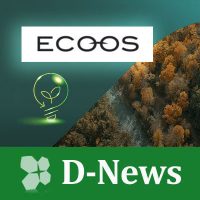
2022 Overview and Perspectives for Australia & New Zealand, China, Indonesia, Malaysia, Thailand, Vietnam.
Daydream – Dynovel have develop a strong expertise on Market Analysis and Strategy for New Energy Technology.
In this context, we have a strong knowledge of renewable energy in Asia and want to share it.
You will find below a summary of current raw data for markets in this region of the world, consolidated raw data not available elsewhere.
If you need help analyzing renewable energy market in Asia or support to help you develop in one of its areas, we can show you the complete Overview (pdf presentation 123 pages) and help you.
Stéphanie Lorini in the USA, Jean-Louis Cougoul in Europe and Yusi Chen in Asia will be your points of contact to organize a meeting and define next steps together.
Next Steps To start a discussion with us
- Asia: yusi.chen@daydream.eu
- Europe: jean-louis.cougoul@daydream.eu
- USA: stephanie.lorini@dynovel.com
Summary
1. Asia – Pacific Renewable Energy Updates 2022 – Introduction
2. Australia & New Zealand
3. China
4. Indonesia
5. Malaysia
6. Thailand
7. Vietnam
8. “Geothermal Innovation”: Point of View
9. Linkedin posting
.
Asia – Pacific Renewable Energy Updates 2022 – Introduction
Australia, China, Indonesia, Malaysia, New Zealand, Thailand, Vietnam.
Asia – Pacific (APAC) region is a home to more than 4 billion people and makes up over 60 % of global GDP. It has economic importance as well as some major economic powers including China, Australia, Singapore, and India are situated here.
Despite some economic turbulences in many parts of the world as a result of COVID-19, the investment in the infrastructure of renewable energy development in the region has been strong, which reflects government efforts to reduce carbon emissions, diversify energy as well as develop renewable energy systems and technologies.
Many experts predict that APAC will continue to exceed other regions especially for the investment and development in renewable energy in the coming years.
In this context, we present Asia – Pacific Renewable Energy Updates end 2022. This report reveals the condition and progress of renewable energy development in Asia – Pacific with focus on Australia, New Zealand, China, Indonesia, Malaysia, Thailand, Vietnam.
Australia & New Zealand



China

Table: China Renewable Installed Capacity in March 2021

Indonesia

Table: Indonesia Renewable Energy Potential

Malaysia

Table: Installed Capacity as of 31 December 2019, in MW

Thailand


Vietnam

Table: Current Condition – Vietnam’s Renewable Energy Capacity

“Geothermal Innovation”: Point of View
The geothermal industry is mature in several countries that have developed it at an early stage, i.e. New Zealand, Iceland, USA, Japan, Italy, the Philippines and more recently Kenya, Indonesia, Turkey, etc.
The specificity of geothermal when compared to other technologies for power generation is that the heat-carrying fluids are extracted from the subsoil and contain minerals, non-condensable gases, and dissolved solids that may precipitate or escape to the atmosphere during the energy conversion process. The geochemical composition of the geothermal fluids extracted as well as their geophysical characteristics and the ways their impact on piping, vessels, turbine, condensers, NCG extraction means etc. are mitigated are of paramount importance during the design of the facilities, and later on during their exploitation.
Continuous R&D programs are ongoing in order to improve:
- Drilling methods and tools, knowing that drilling Capex can represent 30 to 50% of initial investment, along with reduction of emissions during the drilling phase.
- Tubing materials used for drilling able to withstand high temperatures and corrosion risks.
- Online scaling/corrosion inhibition means, either downhole or in the above-ground piping systems.
- Non-condensable gases (CO2, H2S, etc.) treatment to avoid their dispersing into the atmosphere via the cooling systems.
- Anti-scaling methods used before reinjection of the geothermal brine and condensate into the reservoir.
- Harmless biocide products to treat the cooling tower blowdown water stream.
- Etc.
Further, current improvements relate to exploration techniques (such as Lidar, Aerial thermography for example) to investigate difficult areas, reservoir-modelling software and integration techniques, and the targeting of more difficult geothermal fields (deep geothermal, EGC systems, very low enthalpy fields). Combining geothermal with other technologies (solar in specific geographical areas) and with secondary energy conversion (desalination), as well as generalizing direct heat use from the fluids after their first contribution to electricity production are also topics investigated more in the last few years.
Author: Claude Bannwarth – Geothermal consultant based in New Zealand
Linkedin posting
Daydream is glad to present Asia – Pacific Renewable Energy Updates 2022. This report reveals the condition and progress of renewable energy development in Asia – Pacific with focus on Australia, New Zealand, China, Indonesia, Malaysia, Thailand, Vietnam.
Asia – Pacific (APAC) region is a home to more than 4 billion people and make up over 60 % of global GDP. The investment in the infrastructure of renewable energy development in the region has been strong, which reflects government efforts to reduce carbon emissions, diversify energy as well as develop renewable energy systems and technologies. Many experts predict that APAC will continue to exceed other regions, especially for the investment and development in renewable energy in the coming years.
We encourage you to read the teaser for the report: Link to D-News and to contact us for the full report and further discussion.










